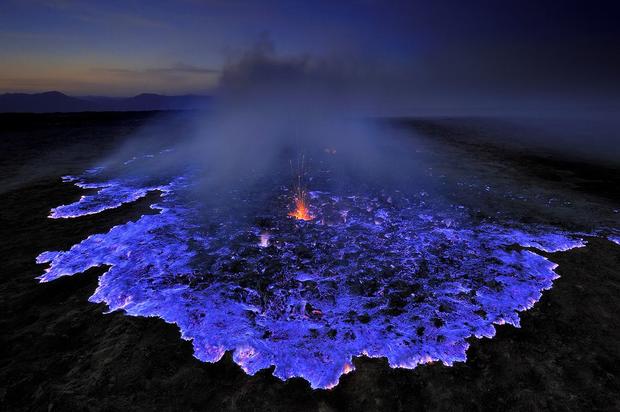Volcano erupts in bright blue flames: Stunning photos
It may look like a scene from another planet or some high-tech Hollywood special effects – but this volcano venting bright blue flames is a real, rarely-seen phenomenon of nature.
Photographer Olivier Grunewald captured it in the stunning picture above of the Kawah Ijen volcano in Indonesia, first published in National Geographic.
The glowing, electric-blue flames are caused by combustion of sulfuric gases. The gases vent from cracks in the volcano with high pressure and temperatures reaching up to 600 degrees Celsius (1,112 degrees Fahrenheit). Once they come in contact with the air, the gases ignite, sending flames shooting as much as 16 feet high.
The gases can also condense into liquid sulfur "which continues to burn as it flows down the slopes," said Grunewald, "giving the feeling of lava flowing."
He photographed a similar, spectacular display of color and fire on the Dallol volcano in Ethiopia (below).
Blue volcanic fire has been documented through history. Grunewald says it was described in antiquity on the south slope of Mount Vesuvius in Italy -- the volcano that destroyed Pompeii -- as well as on the island of Vulcano, off the coast of Sicily.
